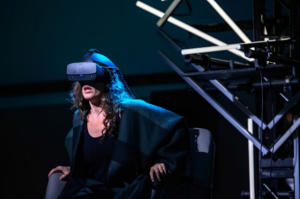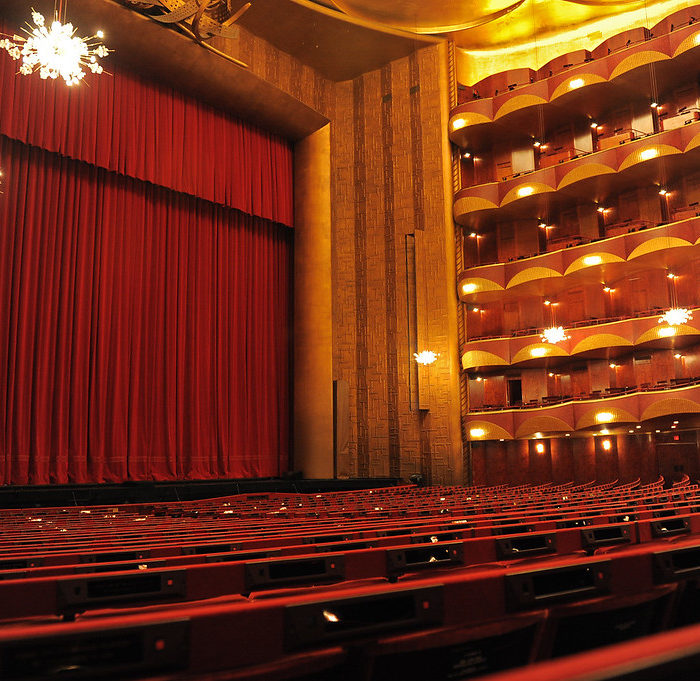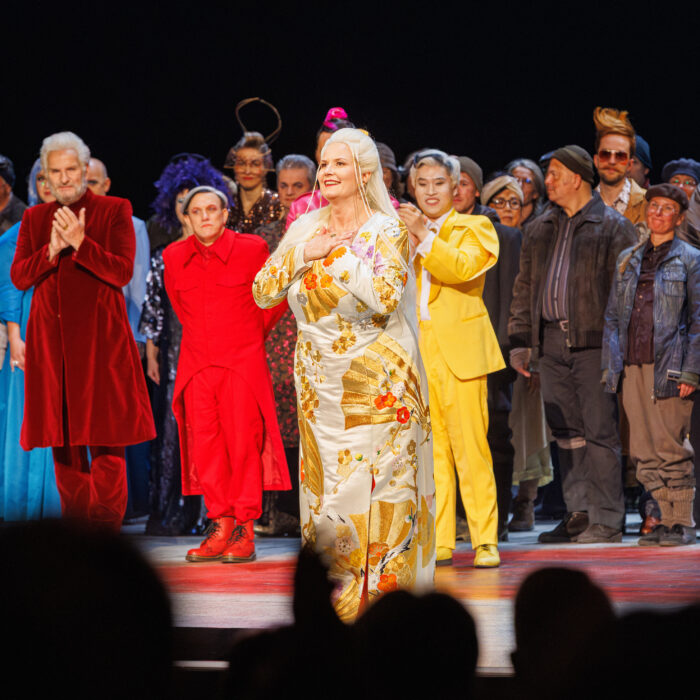
The ‘Strange New World’ of Virtual Reality Opera
By John VandevertPhoto Credit: Dahlia Katz
One of the biggest, and longest-lasting, impacts that the pandemic has had on our society has been in the area of technological adaptation and innovation. One could see this in the widespread usage of live-streamed, Zoom-based productions, as well as other digitally-manipulated processes, in opera from 2019 to 2021. The boom in streaming’s popularity was thanks to houses like Atlanta Opera, Teatro alla Scala, and the Zurich Opera House, to name just a few. Many houses across the world started adopting technology in innovative ways.
What if I told you that there was another element of technology that’s quickly becoming a vital part of modern opera?
I am talking about the growing trend of virtual (VR) and augmented (AR) reality, and its increasing presence in the world of opera productions. While the former has been around since the 1950s—although only exploding into widespread popularity in 2010 with the creation of the ‘Oculus Rift’ headset—the latter began during the 1960s and has become one of the more prominent ways of blending real life with digital life. Both of these transformed reality technologies are taking huge strides in reinventing the ways in which opera houses, companies, and composers both create and perform opera. As shown by the implementation of technologies such as the Varjo Aero headset in recent opera productions—such as Finnish National Opera’s production of “Turandot”—VR and AR can help bring us into a totally new era of opera!
To understand how the artform has found itself here, let us first dive into the rich historical dimensions of virtual reality, see where it began, and learn how it has developed over time as it pertains to opera. Then we shall take a closer look at some recent and notable examples of VR opera. The bright future of opera is here: let us explore this strange new world, where tech meets art!
Some History
In the 1990s, technologically-enhanced instruments were beginning to transform the world of music. Virtual reality’s origins, however, are in the 1950s with the work of Morton Heilig and his “Experience Theater.” A type of theatrical experience that would interact with all five of the human senses, the prototype known as the “Sensorama” was the world’s first taste of a virtual-reality experience. Beginning in the 1960s, tech pioneer Ivan Sutherland created what is regarded as the first attempt at a VR headset called “The Sword of Damocles.” By the 1970s, things were really picking up, with innovations like the Aspen Movie Map, Eric Howlett’s system called the “Large Expanse, Extra Perspective,” and, most interestingly, the “Virtual Interactive Environment Workstation.”
The 1990s would see the rise of affordable VR technologies, including the “Sega VR” and Nintendo’s 1995 “Virtual Boy,” among many other products. The rise of video game consoles and playable games ushered in a totally new era of digital entertainment. Nicole Stenger’s immersive movie experiences certainly helped push VR into the world of entertainment, much like the efforts of Heilig and Sutherland in earlier decades. VR headset innovations stalled during the 2000s, although the technology was not necessarily neglected. In 2010, Palmer Luckey began designing the first prototype of what would become the dominant VR console to date: the Oculus Rift, an over-the-head immersive headset that transported users to different cinematic worlds. By the middle of the decade, a plethora of different options at vastly different price points were available for consumers, including the “PlayStation VR,” the “HTC Vive SteamVR,” along with branded versions by Google and Amazon.
Opera’s usage of VR technology began during the mid-2010s, when this technology was becoming both unavoidable and accessible to the general public. Consonant with the growing involvement of new technology in opera was also the usage of 360-degree video filming, seen in projects like Gran Teatre del Liceu’s “Roméo et Juliette” during their 2017/2018 season. Later, in the wake of the 2019 pandemic, filmed and digital opera and opera projects exploded in popularity. Some famous examples are the San Carlo Digital Opera House, and Opera Colorado’s 2021 digital programming. In the last couple of years, projects like the Opera Beyond Project (2020-) and houses like the Vienna State Opera have become vanguards in demonstrating just how versatile technologically-mediated opera can be and what it can do for the world of opera. Ulster Touring Opera have also taken virtual reality in stride and are creating wonderful things with this new tool.
Just A Few Examples
One of the most recognizable implementations of VR in recent opera projects is the 15-minute collaborative project entitled “Current Rising,” premiered by the Royal Opera House. Directed by Netia Jones, the VR-based opera explored in virtual space how an opera actually comes together. But this is by no means the first opera project of its kind. Earlier projects such as “Half Life VR” (2018) by the Royal Swedish Opera, and Welsh National Opera’s “Madame Butterfly” and “The Magic Flute” (2017), were true pioneers in the field.
Following the pandemic, opera companies have quickly adapted to this strange new world of VR-based opera. Another well-known and lauded opera was “Out of the Ordinary” by Irish composer Finola Merivale. An ongoing project with the Irish National Opera, as a part of the larger European project called TRACTION, the opera used both 360-degree filming, digital soundscapes, and headsets to simulate imaginative worlds. In the immediate future, Deutsche Oper am Rhein’s 2023 production of Erich W. Korngold’s opera “Die Tote Stadt” will have its VR premiere at the Düsseldorf Opera House. Meanwhile, Verdi’s beloved classic “La Traviata” will undergo a VR transformation as part of the Opera Lirica di Roma’s 2023/2024 programming. Finally, Puccini’s “Tosca” has become an immersive experience thanks to the work of UK virtual reality theater group Relative Motion and their 360-degree filming.
As one reviewer succinctly put it, the possibility that the ‘opera’ element of these projects will ultimately become a soundtrack rather than a total experience is a very-real concern. But as the utilization and expression of virtual reality becomes increasingly imaginative, the ways in which the tech world will change the course of operatic theater will be as equally imaginative.
As an opportunity for the democratization of opera, VR is opening a host of strange new worlds for the opera community. What the future holds for opera is as bright as it is unknown!
Categories
Special Features

